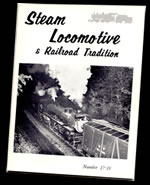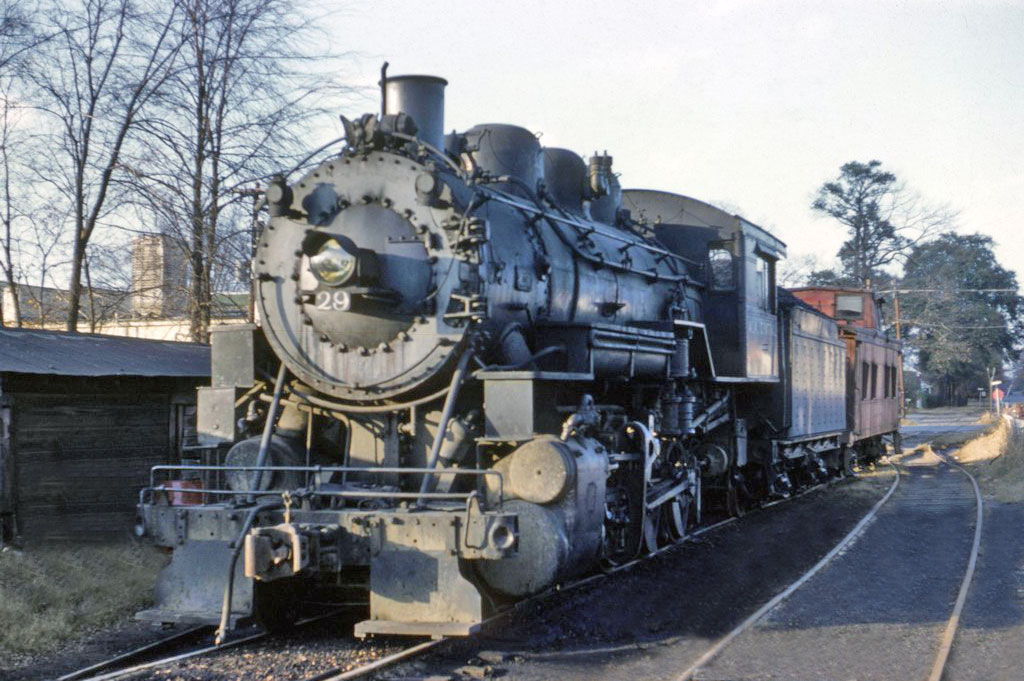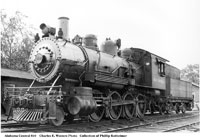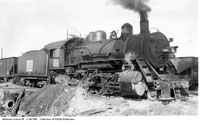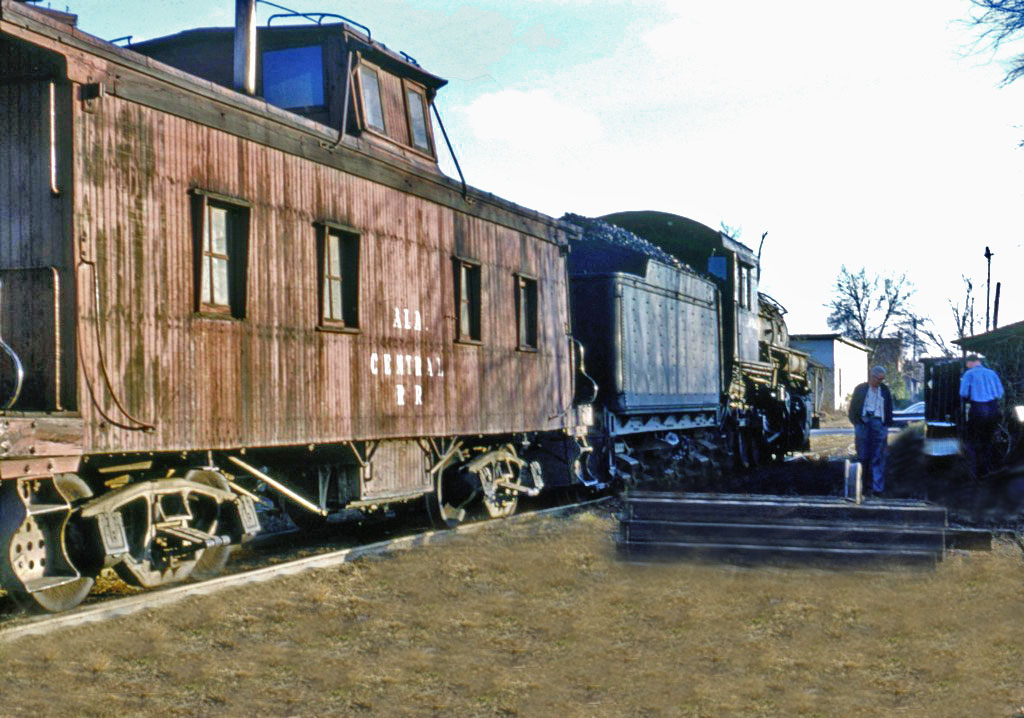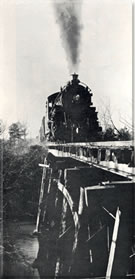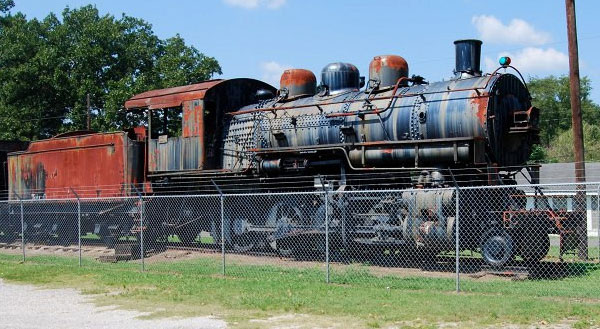Last Days
The Last Days Of On May 26, 1961, a 2-8-0 numbered 29 pulled into Jasper, Ala. , the county seat of Walker County , and 55 years of service on the Alabama Central Railroad came to an end. Coal, the only reason for the railroad's existence, was no longer king in Walker County . Coal, however, was not the reason for the Alabama Central ' s incorporation on May 19, 1906. Originally built to serve a lumber mill at Manchester , 6 miles north of Jasper, the road reached a maximum of 15 miles of track in 1921 after extensions had been opened to two mines.
Coal traffic had declined somewhat but was still good when two heavier steamers became available early in 1955. A slump in coal business had already hit Tennessee ' s Oneida & Western Railway, and that road quit in September, 1954, leaving two 2-8-0's of about 100 tons, Nos. 28 and 29, looking for a new home. C. A. Lee, Jr., president of the Alabama Central, lost no time in buying them, since the 698 was due for tubes.
No. 29 was a real boomer. Alco's Richmond Works built the 2-8-0 in 1923 for another Alabama short line, the Birmingham Southern Railroad. As Birmingham Southern No. 35, she was bumped by diesels in 1937. By way of Birmingham Rail & Locomotive Company, the engine then went to the Chattahoochee Valley Railway, an eastern Alabama short line with shops and offices at West Point , Ga. , as their No. 35. Diesel power took over on the Chattahoochee Valley in 1947 and the 35 moved on to the Oneida & Western as their No. 29, until abandonment sent her back to Alabama and the Alabama Central. After the Central itself quit, Jasper's Jaycees bought No. 29, intending to display the engine. Under local ownership, and with tonnage up substantially from that of the Depression years, the Central ended a long period of deficit operation and made some money during the Forties and Fifties. From 1958 to 1960, however, the annual traffic slipped from 131,804 to 93,703 tons and the company again went into the red. A trickle of material hauled for a dam being constructed nearby was not enough to offset the loss of coal traffic. On Apr. 17, 1960, with a return to profitable operation apparently not likely, President Lee applied to the I.C.C. for permission to abandon the entire 9.96-mile line. Besides the loss of traffic, the 75-pound rail leased from the Illinois Central was overdue for replacement and No. 29 was due for tubes that November. In fact, a Federal inspector had red-tagged her once in 1959 for defective running gear, but pilot wheels and rods from the Illinois Central at Memphis had put her back in order. Permission to abandon was received August 31, 1960, after the road had unsuccessfully tried to buy a serviceable 2-8-0 from a steel mill in Birmingham . Then Mr. Lee asked for and received a six-month extension on the 29's tubes. This gave the road life until the following May. The train ran three days a week, and the crew—Lawrence Maxwell, engineer; Joe Estes, fireman; Basil O' Rear, conductor; and J. C. Gilmore, brakeman—customarily reported for work at 5:00 A.M. By 6:45 the engine was hot, switching at Jasper with the connecting Illinois Central, Frisco, and
After the line quit in May, 1961, the 29 sat in the usual parking spot for several months. The only caboose the Central ever had—it came from the Southern—was given to the company ' s general manager, Miss Mabel Deavours, and trucked to her home to be displayed on its wheels. The rails were sold to Southeastern Metal Company of Charleston, S. C., in October, 1961, and pulled up that month, but not before the Jaycees fired up No. 29 and ran her half-a-mile back up the track to await display. (Because the Alabama Central no longer existed as a common carrier, the 29 could be moved without a Federal inspection. Title to the engine later passed to Jasper ' s Kiwanis Club. In December, Southeastern Metal was awarded the contract to scrap the remains of engine No. 28, which was sitting at Marigold sans pilot wheels on the only section of rails still owned by the railroad, and the half-dozen or so hopper cars that Marigold Coal Mining had bought from the Lackawanna several years previously for on-line use. The cars had been resting in mud since October, when the rails had been yanked from under them. When the scrappers left, memories lingered. Someone recalled that the train crew had completed a total of 85 years of service, and that in 55 years the Alabama Central never had a fatal accident. * Since this article was written in 1967, #29 was moved to the Alabama Mining Museum in Dora, Alabama, where it sits today (9-11-2018) as pictured above. |

